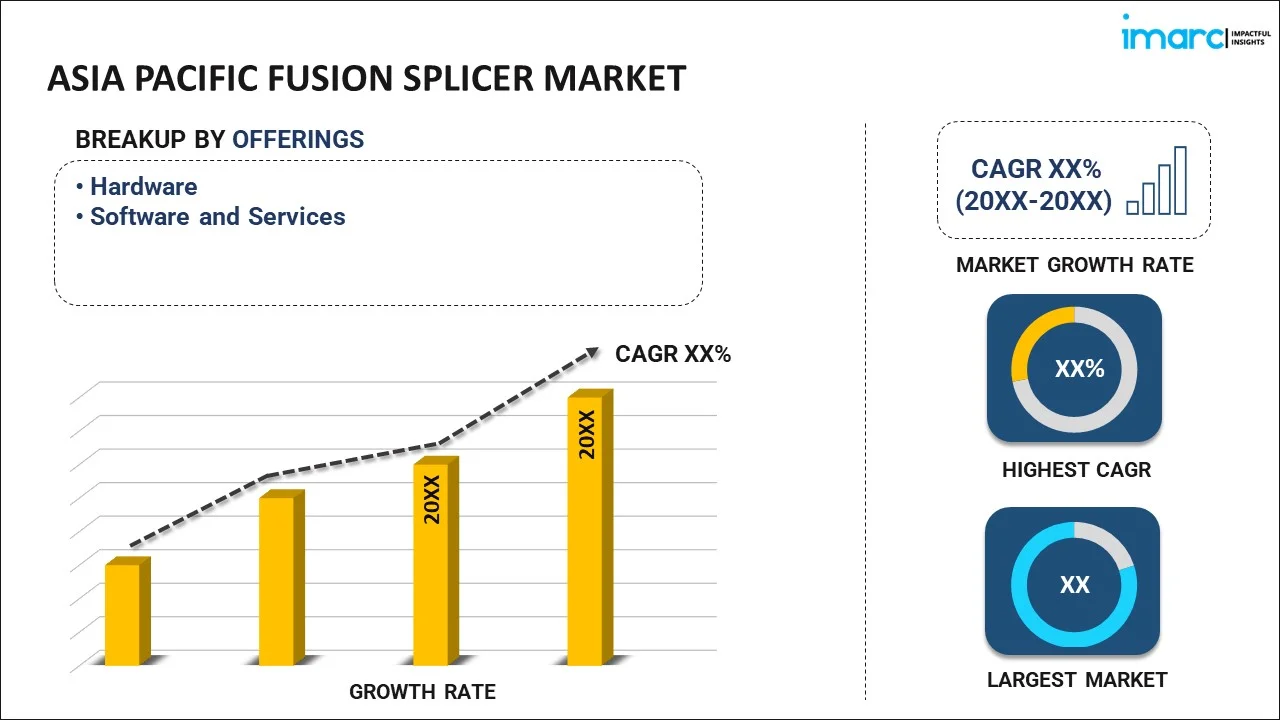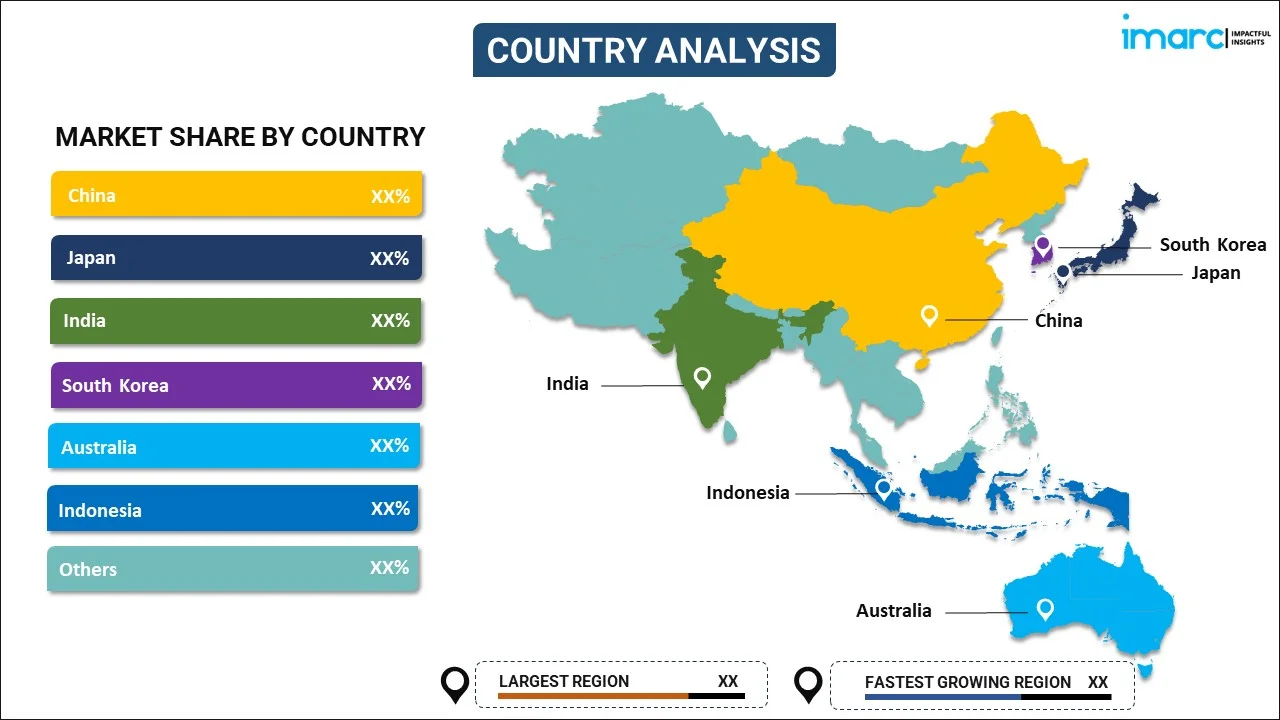
Asia Pacific Fusion Splicer Market Report by Offering (Hardware, Software and Services), Product (Single Fiber Fusion Splicer, Ribbon Fiber Fusion Splicer, Special Fiber Fusion Splicer), Alignment Type (Core Alignment, Cladding Alignment), Application (Telecommunication, Cable TV, Enterprises, Aerospace & Defense, and Others), and Country 2025-2033
Market Overview:
The Asia Pacific fusion splicer market size reached USD 242.2 Million in 2024. Looking forward, IMARC Group expects the market to reach USD 374.4 Million by 2033, exhibiting a growth rate (CAGR) of 4.71% during 2025-2033.
|
Report Attribute
|
Key Statistics
|
|---|---|
|
Base Year
|
2024
|
|
Forecast Years
|
2025-2033
|
|
Historical Years
|
2019-2024
|
|
Market Size in 2024
|
USD 242.2 Million |
|
Market Forecast in 2033
|
USD 374.4 Million |
| Market Growth Rate 2025-2033 | 4.71% |
A fusion splicer is a device utilized to combine two or more optical fibers. It comprises an optical core that assists in aligning fiber cables; profile alignment system (PAS) software that estimates the loss of material during splicing; and a local injection detection system that aids in identifying the edges from where the light is reflected. It currently finds extensive applications across different industries in the Asia Pacific region.
At present, governments of various countries are investing in expanding the fiber-optic networks. This represents one of the significant factors strengthening the growth of the fusion splicers market. Besides this, the increasing adoption of cloud-based infrastructure and the growing requirement for high-bandwidth networks is boosting the overall sales of fusion splicers across the region. However, the outbreak of the coronavirus disease (COVID-19) and lockdown restrictions imposed by governments of several countries have negatively impacted the market growth. The market is currently experiencing growth due to the introduction of lockdown relaxations and the increasing reliance on e-commerce platforms.
Key Market Segmentation:
IMARC Group provides an analysis of the key trends in each sub-segment of the Asia Pacific fusion splicer market report, along with forecasts at the regional and country level from 2025-2033. Our report has categorized the market based on offering, product, alignment type and application.
Breakup by Offering:

- Hardware
- Software and Services
Breakup by Product:
- Single Fiber Fusion Splicer
- Ribbon Fiber Fusion Splicer
- Special Fiber Fusion Splicer
Breakup by Alignment Type:
- Core Alignment
- Cladding Alignment
Breakup by Application:
- Telecommunication
- Cable TV
- Enterprises
- Aerospace & Defense
- Others
Breakup by Country:

- China
- Japan
- India
- South Korea
- Australia
- Indonesia
- Others
Competitive Landscape:
The competitive landscape of the industry has also been examined along with the profiles of the key players.
Report Coverage:
| Report Features | Details |
|---|---|
| Base Year of the Analysis | 2024 |
| Historical Period | 2019-2024 |
| Forecast Period | 2025-2033 |
| Units | Million USD |
| Offerings Covered | Hardware, Software and Services |
| Products Covered | Single Fiber Fusion Splicer, Ribbon Fiber Fusion Splicer, Special Fiber Fusion Splicer |
| Alignment Types Covered | Core Alignment, Cladding Alignment |
| Applications Covered | Telecommunication, Cable TV, Enterprises, Aerospace & Defense, Others |
| Countries Covered | China, Japan, India, South Korea, Australia, Indonesia, Others |
| Customization Scope | 10% Free Customization |
| Post-Sale Analyst Support | 10-12 Weeks |
| Delivery Format | PDF and Excel through Email (We can also provide the editable version of the report in PPT/Word format on special request) |
Key Questions Answered in This Report:
- How has the Asia Pacific fusion splicer market performed so far and how will it perform in the coming years?
- What has been the impact of COVID-19 on the Asia Pacific fusion splicer market?
- What are the key regional markets?
- What is the breakup of the market based on the offering?
- What is the breakup of the market based on the product?
- What is the breakup of the market based on the alignment type?
- What is the breakup of the market based on the application?
- What are the various stages in the value chain of the industry?
- What are the key driving factors and challenges in the industry?
- What is the structure of the Asia Pacific fusion splicer market and who are the key players?
- What is the degree of competition in the industry?
Need more help?
- Speak to our experienced analysts for insights on the current market scenarios.
- Include additional segments and countries to customize the report as per your requirement.
- Gain an unparalleled competitive advantage in your domain by understanding how to utilize the report and positively impacting your operations and revenue.
- For further assistance, please connect with our analysts.
 Inquire Before Buying
Inquire Before Buying
 Speak to an Analyst
Speak to an Analyst
 Request Brochure
Request Brochure
 Request Customization
Request Customization




.webp)




.webp)












